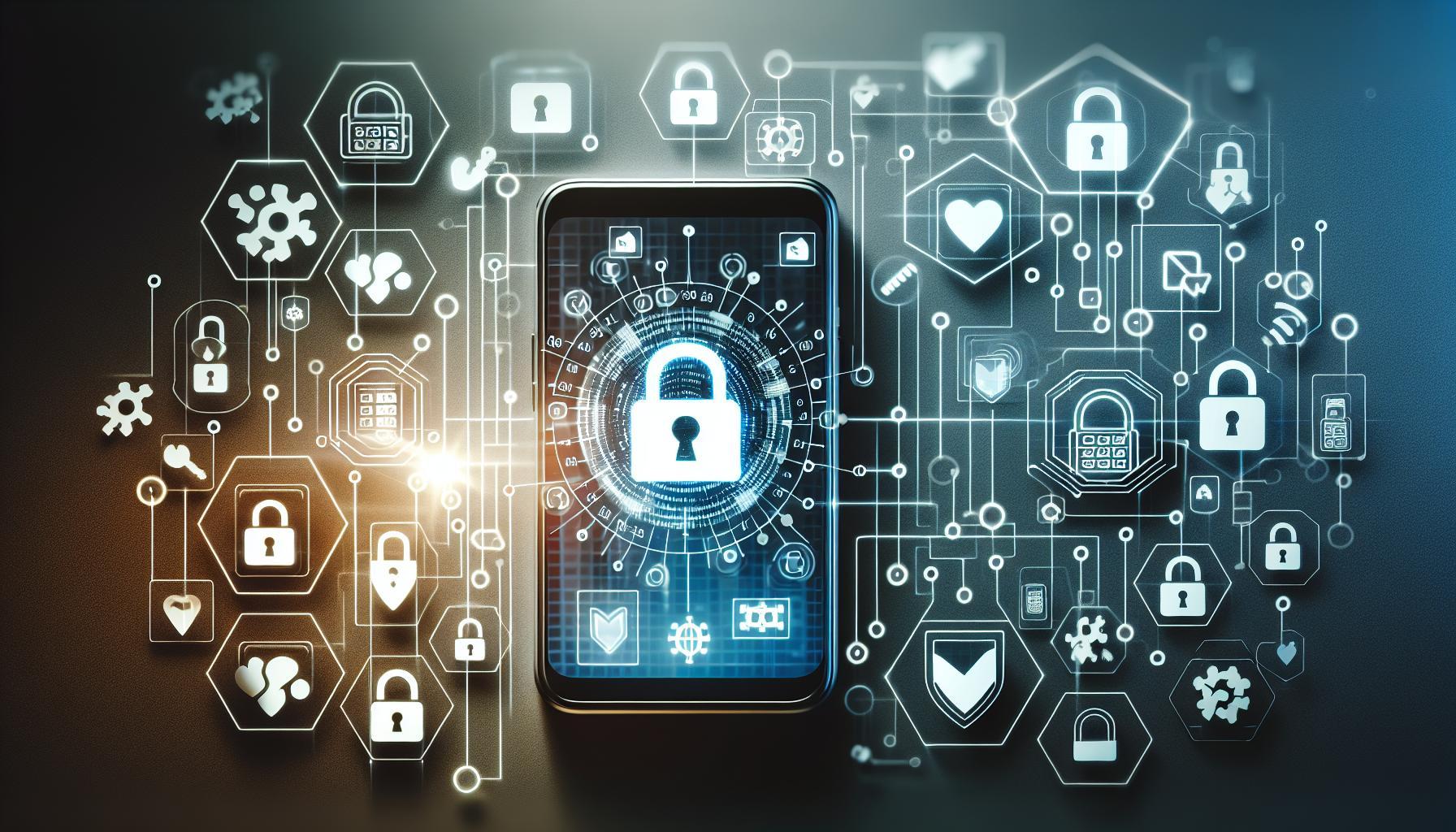In today’s digital landscape,securing your personal details has never been more critical. Regularly updating your login credentials is a vital step in protecting your privacy and preventing unauthorized access. This guide will walk you through the straightforward process of changing your password on a laptop, ensuring your device remains a fortress against cyber threats.
Understanding the Importance of a Strong Password for Your Laptop
When it comes to safeguarding your laptop, the significance of a robust password cannot be overstated. A strong password acts as the first line of defense against unauthorized access, protecting your personal data, sensitive information, and digital identity. In a world where cyber threats are becoming increasingly refined, employing a robust password strategy is essential to enhance your device’s security and prevent potential breaches.
To begin with, a strong password should ideally be at least 12 characters long and utilize a combination of uppercase letters, lowercase letters, numbers, and special characters. This complexity makes it considerably more difficult for attackers to crack your password using brute force methods or automated tools. Avoid using easily guessed information such as birthdays, names, or common phrases, as these are often the first attempts made by cybercriminals. Instead,consider creating a passphrase—a series of random words or a memorable sentence—combined with symbols to create a unique and hard-to-guess password.
Practical Tips for Creating Strong Passwords
- Use a mix of character types (letters, numbers, symbols).
- make passwords as long as possible; longer passwords are typically stronger.
- Avoid reusing passwords across multiple accounts to minimize risk.
- Consider using a password manager to generate and store complex passwords securely.
In addition, regularly changing your password is crucial in maintaining security. Following the guidelines of “How to change password on laptop: Enhance Device Security,” you can not only update your password routinely, but also reinforce your overall security posture. Utilize tools like password managers to automate this process, which will enable you to keep track of unique passwords for every account without the burden of memorization. This approach ensures that even if one of your accounts is compromised,the damage is contained,protecting your othre sensitive data from falling into the wrong hands.
Employing a strong password strategy along with other security measures transforms your laptop into a much less appealing target for cybercriminals. Remember, in the digital age, the security of your data often hinges on one simple yet powerful tool: a strong, unique password for each of your accounts.
Step-by-Step Guide to Changing Your Laptop Password
Changing your laptop password is one of the simplest yet most effective ways to boost your device’s security. With cyber threats becoming increasingly sophisticated, it’s crucial to regularly update your credentials to protect your personal information. Whether you use Windows 10 or Windows 11, the process is straightforward and can be completed in just a few minutes. Below is a detailed guide to help you change your laptop password securely and efficiently.
Step-by-step Process for Changing Your Laptop Password
- Access the Settings Menu: Begin by clicking the ‘start’ button located at the bottom left corner of your screen. From the menu that appears, select the gear icon to open the Settings interface.
- Navigate to accounts: In the Settings window, look for the ‘Accounts’ section. This is where you can manage your user account settings, including your password.
- choose Sign-in Options: Under the Accounts menu, click on ‘Sign-in options.’ Here, you’ll find various ways to sign into your laptop, including your current password.
- Change Your Password: Locate the ‘Password’ option. Click on ‘Change’ to initiate the process. You will be prompted to enter your current password for verification.
- Set Your New Password: After verifying your identity, you’ll be asked to create and confirm your new password. Choose a strong password that includes a mix of uppercase letters, lowercase letters, numbers, and special characters to enhance security.
- Save Changes: Onc you’ve entered and confirmed your new password, click ‘Next’ or ‘Save’ to apply the changes. You may also be encouraged to log back in using your new credentials to ensure everything is set up correctly.
Remember, a strong password is your first line of defense against unauthorized access. Regularly changing your password not only protects your data but also helps mitigate risks associated with stale credentials. By following these steps, you can easily update your password and enhance the security of your laptop, keeping your personal information safe from potential threats.
Tips for Creating a Secure and Memorable Password
Creating a secure and memorable password is one of the most critical steps in protecting your data, especially when it comes to devices like laptops that contain sensitive information. An effective password serves as a vital barrier against unauthorized access, and with the increase in cyber threats, it’s more important than ever to craft passwords that not only meet security standards but are also easy for you to remember.
Strategies for Crafting Strong Passwords
To begin, consider employing some of these tried-and-true methods to create passwords that strike the right balance between complexity and memorability:
- Use a Passphrase: Instead of a simple word, create a passphrase by combining several unrelated words. Such as, “BlueElephantDance!78” is complex yet easy to recall.
- Incorporate Personal Elements: integrate elements of personal significance, such as a favorite song lyric or a childhood nickname, mixed with numbers and symbols for added security. Example: “M0untain$Unset!9” blends personal memory with strong password attributes.
- Leverage a Password Manager: Utilizing a password manager not only simplifies the process of generating complex passwords but also helps in securely storing and retrieving them when needed. This way,you can focus on creating unique passwords without the fear of forgetting them[[2]](https://www.cisa.gov/secure-our-world/use-strong-passwords).
- Avoid Predictable Patterns: Stay clear of easily guessable information like birthdays, anniversaries, or simple keyboard sequences. Hackers often use common patterns, such as sequences like “12345” or “qwerty”[[1]](https://www.mcafee.com/blogs/consumer/family-safety/15-tips-to-better-password-security/).
Additional Tips for Enhancing Password Security
Here are a few more strategies to elevate the security of your passwords and safeguard your devices:
- utilize Mixed Characters: Combine uppercase letters, lowercase letters, numbers, and symbols. For instance, “C0mpl3x@Pass123!” is more secure than simply “password123.”
- Change Passwords Regularly: Make it a habit to change your passwords periodically, especially for sensitive accounts. Aim for every 3 to 6 months to reduce the risk of breaches.
- Enable Two-Factor Authentication (2FA): Whenever available, activate 2FA.It adds an additional layer of security by requiring a second form of verification, making it harder for unauthorized users to access your accounts[[3]](https://www.forbes.com/advisor/business/how-create-strong-password/).
Incorporating these password creation strategies can greatly enhance your device’s security, effectively supporting efforts on how to change the password on your laptop and ensuring that your sensitive data remains protected against potential threats. A little creativity and discipline can go a long way in securing your digital life.
Exploring Different Methods to Change Passwords on Various Operating Systems
Changing passwords is a basic aspect of maintaining device security, yet many users are unaware of the various methods available for the operating systems they use. Each system offers unique pathways to change passwords, catering to the diverse needs of its users. For instance, Windows operating systems provide several straightforward options that users can easily adopt.Whether you’re dealing with Windows 10 or 11, understanding these methods can significantly enhance your online and offline security.
Methods to Change Passwords on Windows
Windows provides multiple approaches for changing passwords, ensuring that users can select the technique that best fits their comfort level and circumstances. Here are some methods you can utilize:
- Using Ctrl + Alt + Delete: this method is particularly user-amiable. Simply press these three keys simultaneously, select the “Change a password” option, and follow the prompts to set a new password.
- Via Windows settings: Navigate to Settings > Accounts > Sign-in options. From there, you can find options to change your password or manage other security settings.
- Utilizing the Command Prompt: For those who prefer a more technical route, open the Command Prompt as an administrator and use the command
net user [username] [newpassword]to change the password for any user account on the system.
Changing Passwords on macOS
For Mac users, in addition to a secure experience, changing your password is simplified through access to System Preferences. To update your password, you can go to System preferences > Users & Groups.After selecting your user account, clicking on “Reset Password” allows you to enter a new password securely. It’s essential to utilize a strong password to keep your device secure from unauthorized access. Moreover, MacOS supports Apple ID password recovery, which can be especially useful if you forget your user account password.
resetting Passwords on Linux
linux users benefit from robust options for changing passwords, particularly through terminal commands.The command passwd [username] allows immediate password modification. After entering this command in the terminal, the user will be prompted to enter a new password. This method is swift and straightforward, making it ideal for advanced users looking to enhance device security without navigating through graphical interfaces.
| Operating System | Method | Details |
|---|---|---|
| Windows | Ctrl + Alt + Delete | User-friendly method accessible at any login screen. |
| macOS | System Preferences | Easy access to password settings for bound Apple IDs. |
| Linux | terminal Command | Direct command line access to modify user passwords. |
understanding how to change your password on various operating systems not only protects your personal data but also empowers you to manage your device security effectively.Each method, whether it’s through simple keypress combinations, system settings, or terminal commands, equips users with the ability to protect their devices as threats evolve in the digital landscape.
How to Enable Two-Factor Authentication for Added Security
Ensuring secure access to your accounts has never been more crucial in our digital age, where cyber threats are increasingly sophisticated.One of the most effective methods to bolster your security is by enabling two-factor authentication (2FA). This added layer of security makes it significantly harder for unauthorized users to gain access to your accounts,even if they have your password. By requiring a second form of verification, you can enhance your defenses against potential attacks.
Steps to Enable Two-Factor Authentication
The process to enable two-factor authentication may vary slightly depending on the platform or service, but the general steps are usually consistent.Here’s a straightforward guide to get you started:
- Log into Your Account: Start by signing in to the account where you want to enable 2FA.
- Access Security Settings: Navigate to the account settings section. Look for options labeled “Security,” “Privacy,” or something similar.
- Select Two-Factor Authentication: Within the security settings, locate the two-factor authentication option. This might potentially be listed under various terms like “2FA,” “Two-Step Verification,” or “Login Verification.”
- Choose Your Verification Method: Most services offer several options for the second factor, such as:
- SMS Codes: Receive a text message with a verification code.
- Authentication Apps: Use apps like Google authenticator or Authy, which generate time-sensitive codes.
- Email Verification: Some platforms send a code to your registered email.
- Security Keys: Consider using a physical security key that you insert into your device or connect via NFC, enhancing the security significantly [[1]](https://consumer.ftc.gov/articles/use-two-factor-authentication-protect-your-accounts).
- Complete the Setup: Follow the prompts to confirm your chosen method. You may need to enter a code sent to you during this setup process to activate 2FA.
- Save Backup Codes: Many services provide backup codes during the setup.Store these in a safe location; they can help you regain access if you lose your second-factor method.
By implementing 2FA, you significantly reduce the risk of unauthorized access, even if your password is compromised. Remember, the effectiveness of protecting your accounts through this enhanced security measure lies in regularly updating your passwords as part of a comprehensive approach to personal cybersecurity, including strategies like those discussed in “How to change password on laptop: Enhance Device Security.” Embrace this essential practice to keep your online presence secure against evolving threats.
Recognizing Signs That it’s Time to Update Your Laptop Password
In today’s digital landscape,the importance of robust security measures cannot be overstated,especially when it comes to your laptop.A compromised password can lead to unauthorized access to sensitive information,financial resources,and personal data. Therefore, recognizing the signs that it’s time to update your laptop password is a critical step in enhancing your device’s security.
One of the most glaring indicators that your password needs a refresh is if you have created it more than six months ago. While this may seem like a reasonable time frame, frequent updates can significantly impede potential breaches. Similarly, if your current password is simple or easily guessable—such as “password123” or your birthdate—it’s essential to change it instantly. Strong passwords should consist of a mix of uppercase letters, lowercase letters, numbers, and special characters.
Detecting Security breaches
Being alerted to any suspicious activity on your device or accounts should prompt an immediate password change. Unrecognized login attempts, unexpected emails regarding password changes, or your laptop exhibiting unusual behavior are all signs of potential compromise. Even if you haven’t confirmed a breach, taking proactive measures by updating your password can help bolster your security.
- You notice unusual activity in your accounts.
- You share your laptop with others, and your password is known by multiple users.
- You suspect your device may have been compromised after an untrusted download or public Wi-Fi usage.
Moreover, if you’ve recently shared your password—whether intentionally with a colleague or unintentionally through a phishing attempt—changing it should be your next step. Regularly updating your passwords is not just about prevention; it’s about maintaining control over your digital footprint.
Implementing a personal schedule for changing your laptop password can form part of a broader security strategy. Consider setting reminders every few months to keep your digital barriers strong. By acknowledging these signs and taking action, you can significantly enhance your device security and safeguard your personal information.
Best Practices for Managing and Storing Your Passwords Safely
in today’s digital landscape, keeping your passwords secure is more crucial than ever. With increasing instances of cyberattacks,managing your passwords effectively can protect your sensitive information and enhance device security.A staggering number of individuals still use weak passwords or the same password across multiple sites, making them easy targets for malicious actors. By implementing best practices for password management, you can significantly reduce the risk of compromise.
Utilize Password managers
One of the most efficient ways to manage and store your passwords safely is by using a reputable password manager. These tools can generate, retrieve, and store complex passwords, alleviating the need to remember each one. Features to consider when selecting a password manager include:
- Robust Encryption: ensure the tool uses strong encryption methods, such as AES-256, to safeguard your password database.
- Multi-Device Support: Choose a solution that syncs across all your devices, allowing easy access wherever you are.
- Zero-Knowledge Policy: Opt for a manager that employs a zero-knowledge architecture, ensuring that even the service provider cannot access your passwords.
By integrating a password manager into your routine,you not only simplify password management but also enhance your overall security posture. Though, always remember to protect your password manager with a strong master password and enable two-factor authentication for added safety.
Regularly Update Your Passwords
Changing your passwords regularly is critical in maintaining device security—especially for sensitive accounts. It’s advisable to regularly rotate passwords, ideally every three to six months.When updating a password, consider these practices to reinforce security:
- Create Unique Passwords: Ensure each account has a distinct password to prevent a single breach from affecting multiple sites.
- use a Password Structure: Employ a strategy like combining a memorable phrase with numbers and symbols. For example, instead of “password123,” use “mydog@$2025!”
- Be aware of Password Leaks: Regularly check if your passwords have been compromised using services like “Have I Been Pwned” to promptly update them if necessary.
Staying vigilant with password updates is a proactive step in securing your online accounts and ultimately enhancing device security.
Practice Good Password Hygiene
Even with the best tools and practices in place, good password hygiene is essential. Here are some actionable steps you can take to maintain security:
- Enable Two-Factor Authentication (2FA): Whenever available, activate 2FA for your accounts as an additional layer of protection.
- Be Cautious with Security Questions: Choose security questions and answers that are not easily obtainable or guessable by others.
- Avoid Public Wi-Fi: Limit access to sensitive accounts when using public networks, as they can be breeding grounds for cyber threats.
By adopting these practices alongside your password management strategies, you significantly reduce your vulnerability to cyber threats and ensure a safer digital experience.
Implementing these best practices will not only help you securely manage and store your passwords but also fortify your overall online presence as you look to enhance device security. Remember, the effectiveness of your password management largely depends on your commitment to maintaining strong, unique passwords and staying informed on cybersecurity best practices.
Q&A
How to change password on laptop: Enhance Device Security?
To change your password on a laptop, navigate to your device’s settings. For Windows, go to Settings > Accounts > Sign-in options.On a Mac, access System Preferences > Users & Groups. This protects your information from unauthorized access.
Changing your password regularly is crucial for enhancing device security. by doing this, you significantly reduce the risk of unauthorized access. it’s also critically important to choose a strong password, combining letters, numbers, and symbols.
For more detailed steps, check out our guide on how to secure your computer.
Why should I change my password regularly?
regularly changing your password minimizes risks from data breaches and unauthorized access. Cybersecurity threats evolve, and updating your password helps safeguard your information.
Frequent updates to your password can protect sensitive information, especially if you suspect any breach. It’s also a good practice to avoid using the same password across multiple sites, as this increases your vulnerability.
Can I use a password manager to change my laptop password?
yes, a password manager can help you generate and store strong passwords. however,you will still need to change your laptop password directly through system settings.
Password managers provide a secure way to manage your passwords, making it easier to create complex passwords without remembering each one. They enhance your security by allowing you to use unique passwords for different accounts.
What is a strong password for my laptop?
A strong password is long (at least 12 characters), unique, and includes a mix of upper and lower case letters, numbers, and symbols. Avoid using easily guessed information, such as birthdays or names.
Using phrases or a combination of unrelated words can also increase strength. Remember to update your password regularly and consider a password manager for enhanced security.
How to recover a forgotten laptop password?
To recover a forgotten laptop password, use the password reset options available on your operating system, which often include recovery disks or security questions.
for Windows, you can create a password reset disk, while Mac users can use their Apple ID. Be sure to follow the manufacturer’s instructions, as each system may vary.
What are the risks of not changing my laptop password?
Not changing your laptop password regularly can lead to potential security breaches, identity theft, and unauthorized access to personal information.
Hackers often exploit outdated passwords to gain entry into systems. Regular updates are essential to maintaining your device’s security,ensuring your data remains protected.
can I set a different password for my laptop and online accounts?
Yes, it’s advisable to use different passwords for your laptop and online accounts. This enhances security by ensuring a single breach doesn’t compromise all your data.
Using a unique password for each account minimizes risks from hacking.This practice helps in creating a layered security approach, which is vital in today’s digital landscape.
How can I ensure my password is secure?
To ensure your password is secure, use a combination of letters, numbers, and symbols, and avoid common words or phrases. Regularly updating your password also adds a layer of security.
Additionally, consider enabling two-factor authentication for an extra security layer. This makes it harder for unauthorized users to gain access, even if they have your password.
Concluding Remarks
changing your laptop password is a crucial step in enhancing your device’s security. By following the simple methods outlined in this guide, you can ensure that your personal information remains safe from unauthorized access. Whether you need to reset your password using Microsoft accounts, local accounts, or even a password reset disk, the options are designed to suit different situations and user preferences.
Don’t forget to set up security questions or create a password reset disk in advance—these proactive measures can save you valuable time and stress in the future. Regularly updating your password and using unique combinations can greatly reduce the risk of hacking.For those looking to dive deeper into device security, consider exploring additional tips on safeguarding your data, such as enabling two-factor authentication or utilizing password managers. Your commitment to online safety is essential in today’s digital landscape. Stay informed, keep your passwords secure, and take control of your device security today!







